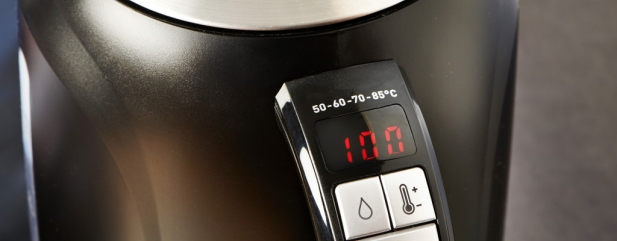Archived article
Please note that tax, investment, pension and ISA rules can change and the information and any views contained in this article may now be inaccurate.
Investors should flick the switch on Strix

Many investors will already be customers of Strix (KETL:AIM) without necessarily knowing it. The company makes kettle controls and safety devices on 70m kettles sold worldwide each year.
Whether yours is a posh Bosch or a discount Russell Hobbs, chances are that it automatically switches off when the water boils thanks to Strix gadgetry.
Strix joined the stock market at 100p, a price thought of as cheap at the time because its private equity owner wanted out as part of its winding down process and Strix was its last asset to sell.
The company predominantly sells to 180-odd Chinese kettle manufacturers and has long-term relationships with over 400 brands and retailers. It claims about 40% of global market share.
Which begs the question, where’s the growth?
Global electric kettle demand is on the rise, largely thanks to China. Between 2012 and 2017 the market averaged 5.6% growth a year but this pace is expected to increase to beyond 7% annually through to 2020.
Analysts believe Strix can outstrip that global growth pace, going closer to 10% a year, as it increases penetration of less regulated end-markets through new lower-cost products, such as the U9-Series.
It is based on a common design which allows for simple regional safety modifications. That means economies of manufacturing scale without complex and expensive production retooling. This should allow Strix to increasingly compete on price while maintaining its quality advantages.
DEFENDING ITS PATCH
There is copycat competition but most brand name kettle makers would rather play safe and use trusted suppliers like Strix than risk expensive and damaging product recalls. This will help defend operating profit margins running in the 30% to 33% range. Other barriers to entry include Strix’s scale, established relationships, intellectual property and safety standards.
The company also produces the Aqua Optima product line, the number two water filter brand in the UK, supplementing kettle controls opportunities.
Strix has generated over £30m of adjusted earnings before interest, tax, depreciation and amortisation (EBITDA) in each of the last 10 years. The business is very cash generative with an EBITDA conversion rate greater than 90% and limited capex requirement.
Having used most of its £190m float proceeds to pay down debt Strix is expected to trade on a modest 0.9-times net debt to EBITDA by the end of 2018.
This means much of the cash it throws off each year can be paid out to shareholders. The current share price implies a 5% dividend yield this year to 31 December, rising to 5.5% in 2019. Add in the discounted 2019 price to earnings multiple of 9.3 and Strix looks a super income and growth investment.
Important information:
These articles are provided by Shares magazine which is published by AJ Bell Media, a part of AJ Bell. Shares is not written by AJ Bell.
Shares is provided for your general information and use and is not a personal recommendation to invest. It is not intended to be relied upon by you in making or not making any investment decisions. The investments referred to in these articles will not be suitable for all investors. If in doubt please seek appropriate independent financial advice.
Investors acting on the information in these articles do so at their own risk and AJ Bell Media and its staff do not accept liability for losses suffered by investors as a result of their investment decisions.
Issue contents
Big News
- Eurozone relief... but for how long?
- Good week for the markets but setbacks for Reckitt and Clarkson
- Stadium purchase to accelerate TT Electronic’s profits scale
- Online isn’t necessarily the ticket to retail success
- Should shareholders get involved with Capita’s £701m rights issue?
- Fast growth vaping firm Supreme to float on the stock market
 magazine
magazine










